He was born Gaius Octavius, and when his maternal great-uncle Julius Caesar was assassinated in 44 BC, Octavius was named as his adopted son and heir.
As Augustus, he restored the outward façade of the free Republic. In reality, he held autocratic power over the Republic as a military dictator. His reign initiated the Pax Romana, and the Roman world was largely free from large-scale conflict for more than two centuries, despite continuous wars of imperial expansion.
Augustus died in AD 14 at the age of 75, probably from natural causes.
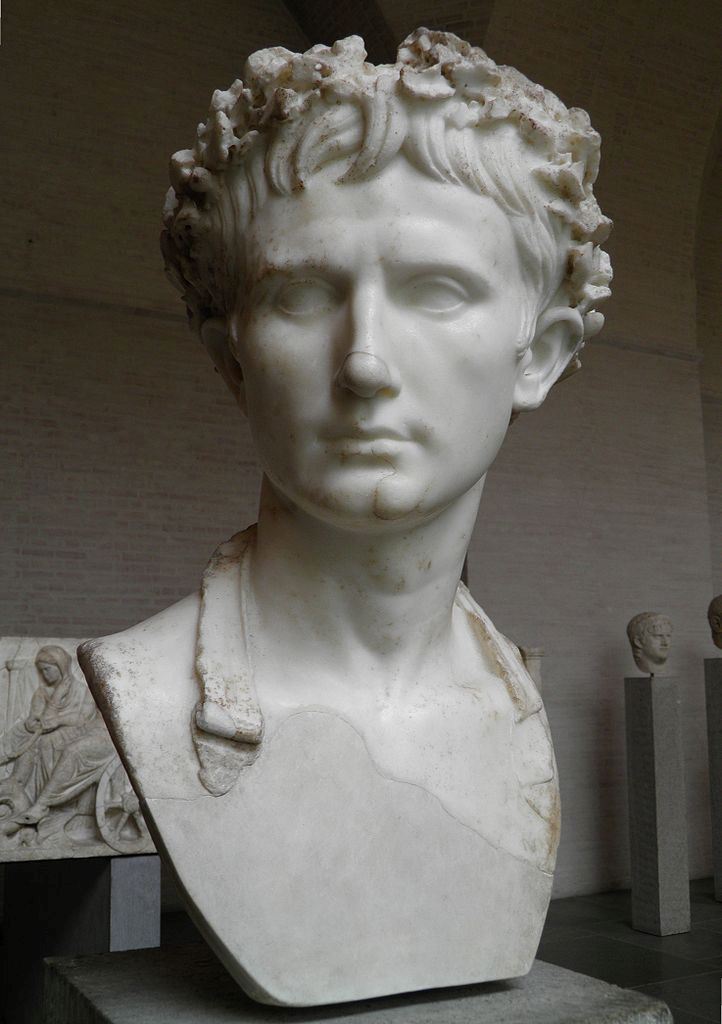
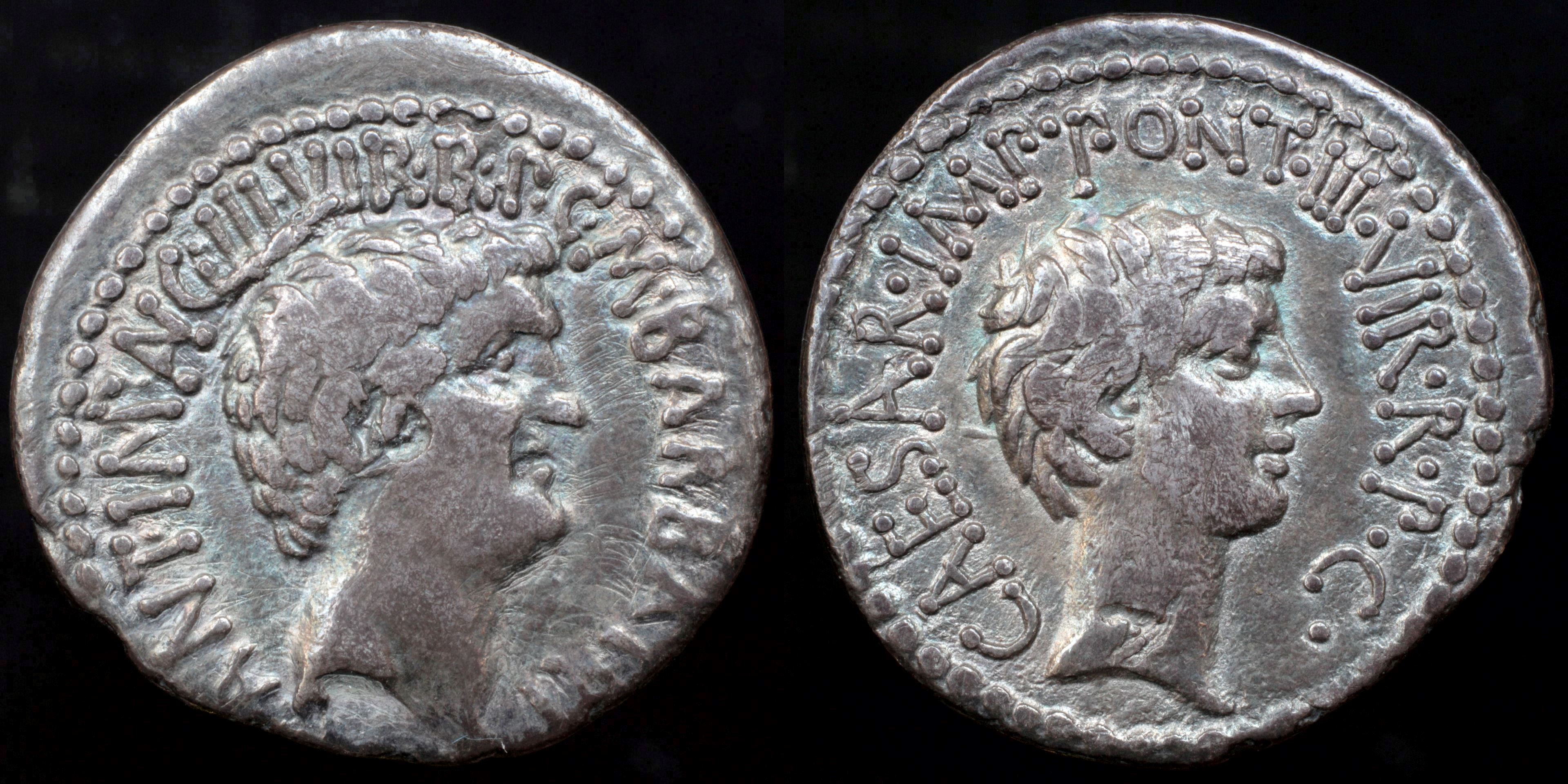
Reverse: head of Octavian Caesar right, CAESAR·IMP·PONT·III·VIR·R·P·C·
Die Orientation: -
Weight: 3.3 g
Mark Antony, Octavian Caesar, struck in Ephesus? from spring to early summer 41 BC. Moneyer held unusual office quaestor pro praetore in the east in 41-40 BC. He accompanie Mark Antony after the battle of Philippi. He was probably also Curule Aedile. He restored aedicula shrine on the Forum Romanum and fountain of goddess Juturna (Lacus Iuturnae).
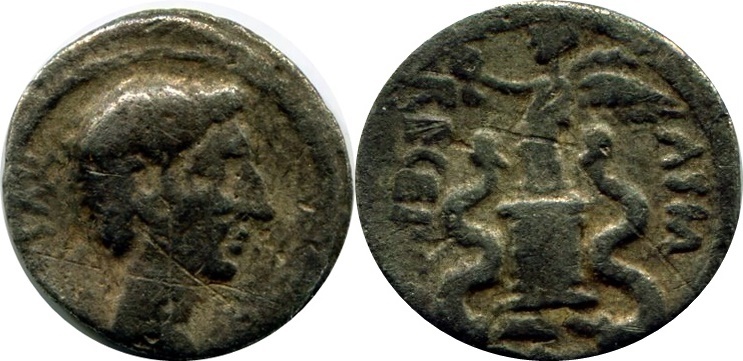
Reverse: ASIA RECEPTA – Victory draped, standing looking left, holding wreath in right hand. On cista mystica between two snakes
Die Orientation: 0 H
Weight: 1.45 g
This issue was struck to commemorate that the province of Asia had accepted Octavian's victory over Marcus Antonius in 30 BC. But where Aegyptus was a client kingdom, and therefore could be captured per se, Asia was a veteran province already, so the regular CAPTA reverse was probably deemed unsuitable, and the RECEPTA reverse was used instead.
.png)
Reverse: ASIA RECEPTA, Victory standing facing left, holding wreath and palm, on top of cista mystica, serpents at left and right
Die Orientation: 1 H
Weight: 1.66 g
RSC has this to say:
"The subjection of the Province of Asia occurred in B.C. 30."
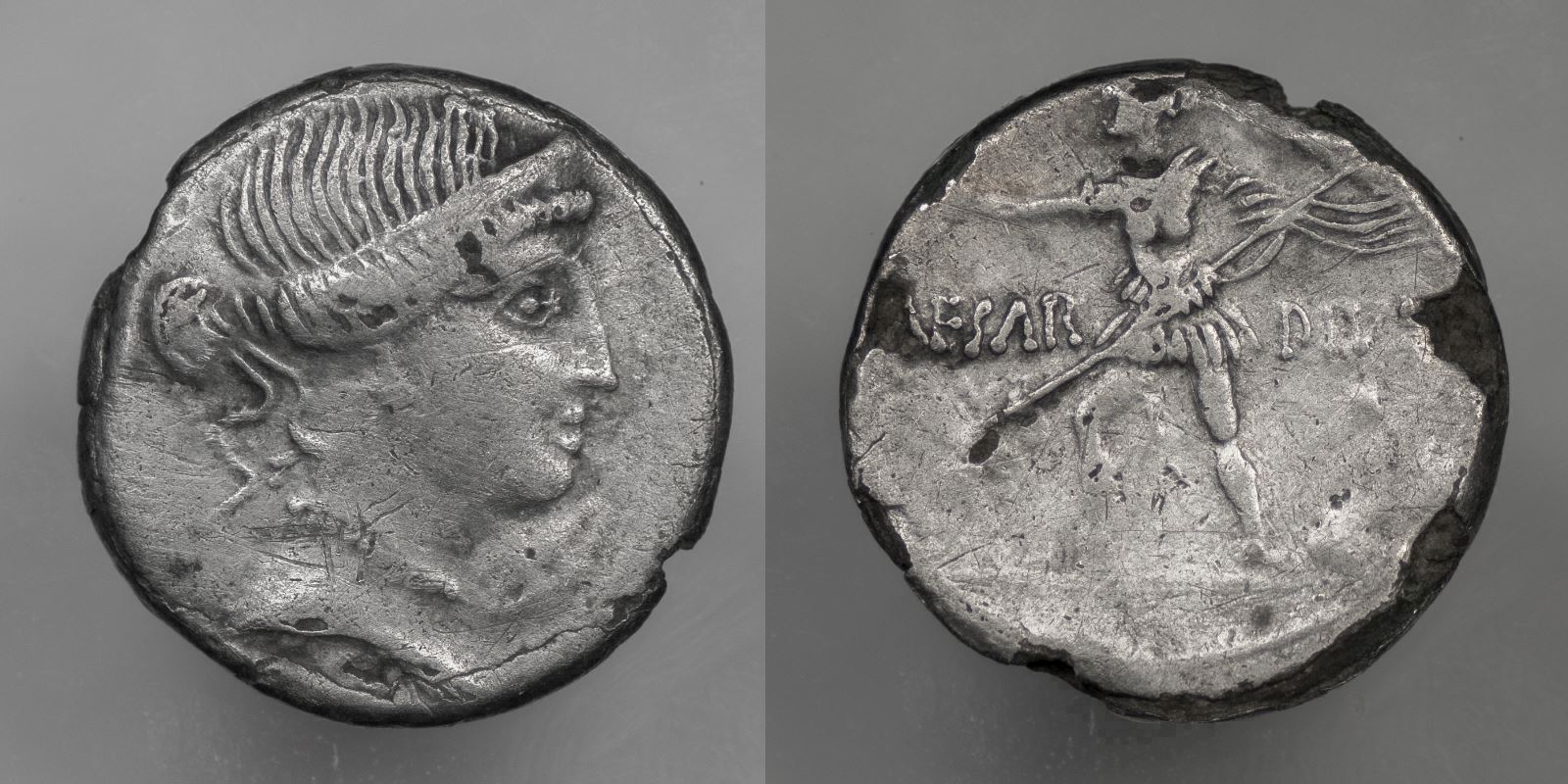
Reverse: CAESAR DIVI F, Octavian in military dress, cloak flying behind, advancing left, right arm extended, left hand holding transverse spear
Die Orientation: 6 H
Weight: 2.54 g
The below quote from forumancientcoins.com puts the coin in context:
"In July 32 B.C., Octavian illegally obtained Antony's will and exposed it to the Roman public: it promised substantial legacies to Antony's children by Cleopatra and left instructions for shipping his body to Alexandria for burial. Rome was outraged, and the Senate declared war against Cleopatra (an important distinction, because Octavian did not want the Roman people to consider it a civil war). Octavian's forces decisively defeated the forces of Antony and Cleopatra at the Battle of Actium in Greece in September 31 B.C. In 30 B.C., Octavian chased Antony and Cleopatra to Egypt where they committed suicide. Octavian became master of the Roman world."
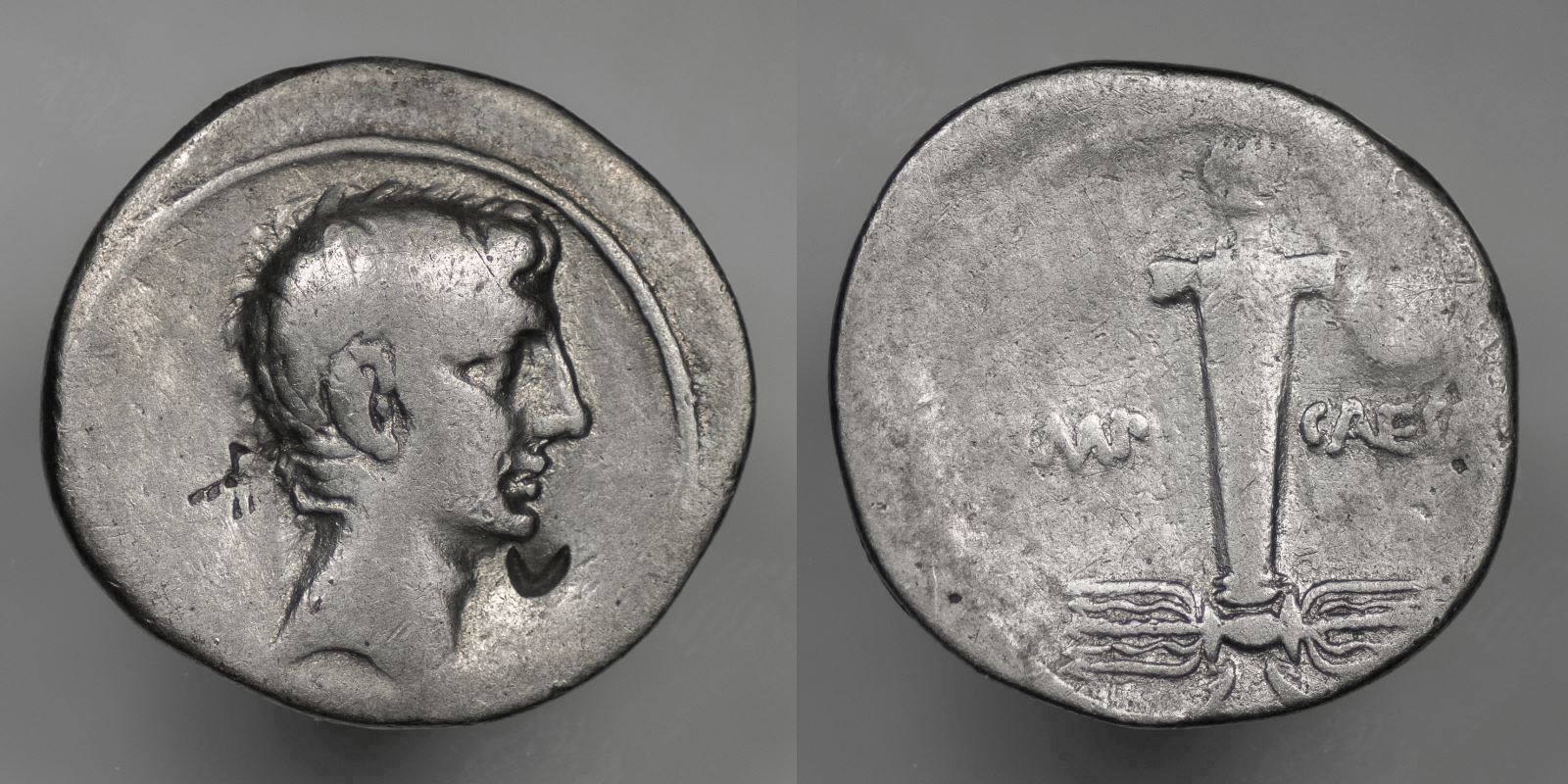
Reverse: IMP CAESAR, Facing head of Octavian on ithyphallic boundary stone of Jupiter Terminus, winged thunderbolt below
Die Orientation: 5 H
Weight: 3.53 g
Uncertain mint in Italy, maybe Rome or Brundisium per RIC.
The following quote from forumancientcoins.com puts this coin in context:
"this propaganda referred to Octavian's re-establishment of boundaries in the east after the battle of Actium and review of the client kingdoms established by Marc Antony (in particular return of Roman territory from Cleopatra and her children)"
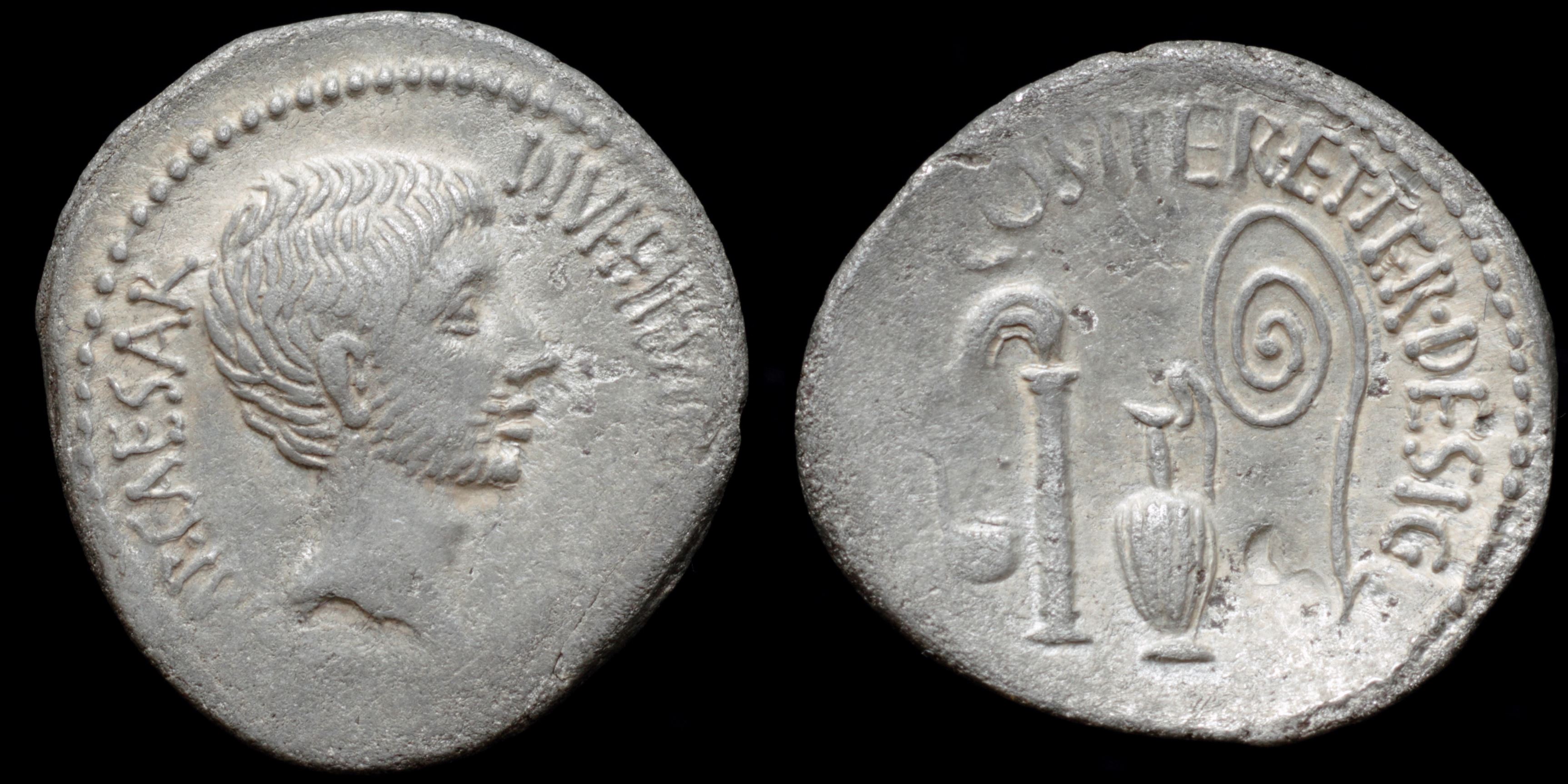
Reverse: sacrificial implements: simpulum (ladle), aspergillum (sprinker), ewer (jug), lituus (augural wand), COS·ITER·ET·TER·DESIG
Die Orientation: -
Weight: 3.5 g
.jpg)
Reverse: DIVOS IVLIVS, Head of Julius Caesar facing right, wearing laurel wreath
Die Orientation: 9 H
Weight: 20.82 g
.jpg)
Reverse: COS ITER ET TER DESIG, Pontifical emblems: simpulum, aspergillum, jug, and lituus
Die Orientation: 6 H
Weight: 3.57 g
.jpg)
Reverse: IMP CAESAR, A naval and military trophy consisting of the weapons and armor of a defeated enemy on a tree trunk on top of a prow of a captured galley with crossed anchor and rudder
Die Orientation: 1 H
Weight: 3.71 g
Arranged around its base were additional arms and sometimes bound captives. Here, in place of the additional arms and/or captives the trophy sits on the beak (rostrum) of an enemy warship with a rudder and anchor at its base.
This denarius was part of a series of aurei and denarii that were struck between the autumn of 30 BC and 29 BC and which conveyed a general message of victory and re-foundation.
Sear associated this denarius with a contemporary aureus showing on its reverse a similar trophy housed in a tetrastyle temple decorated with a triskeles in its pediment. The obverse of that coin, a bust of Diana Siciliensis, led him to argue that the aureus commemorated Octavian's important victory over Sextus Pompey at the Battle of Naulochus in 36 BC.
The reverse of this denarius, however, does not specify a particular victor. The most likely possibility is that it commemorates Agrippa's victory over Antony and Cleopatra at Actium the previous September, the final triumph for Octavian, the undisputed master of the Roman Empire."
.jpg)
Reverse: Equestrian statue with Octavian, facing left; S·C in exergue
Die Orientation: 6 H
Weight: 3.25 g
"This is a favourite type coin for me as it is the first appearance of Octavian on a coin. Very often found in low grade, it is nonetheless a very historically important coin. It’s a great piece of history at a low price! Here you see a young Octavian for the first time on the obverse. The reverse shows the equestrian statue that he demanded the senate build for him after putting down the siege at Mutina. It is a brazen display of Octavian’s contempt for the senate."
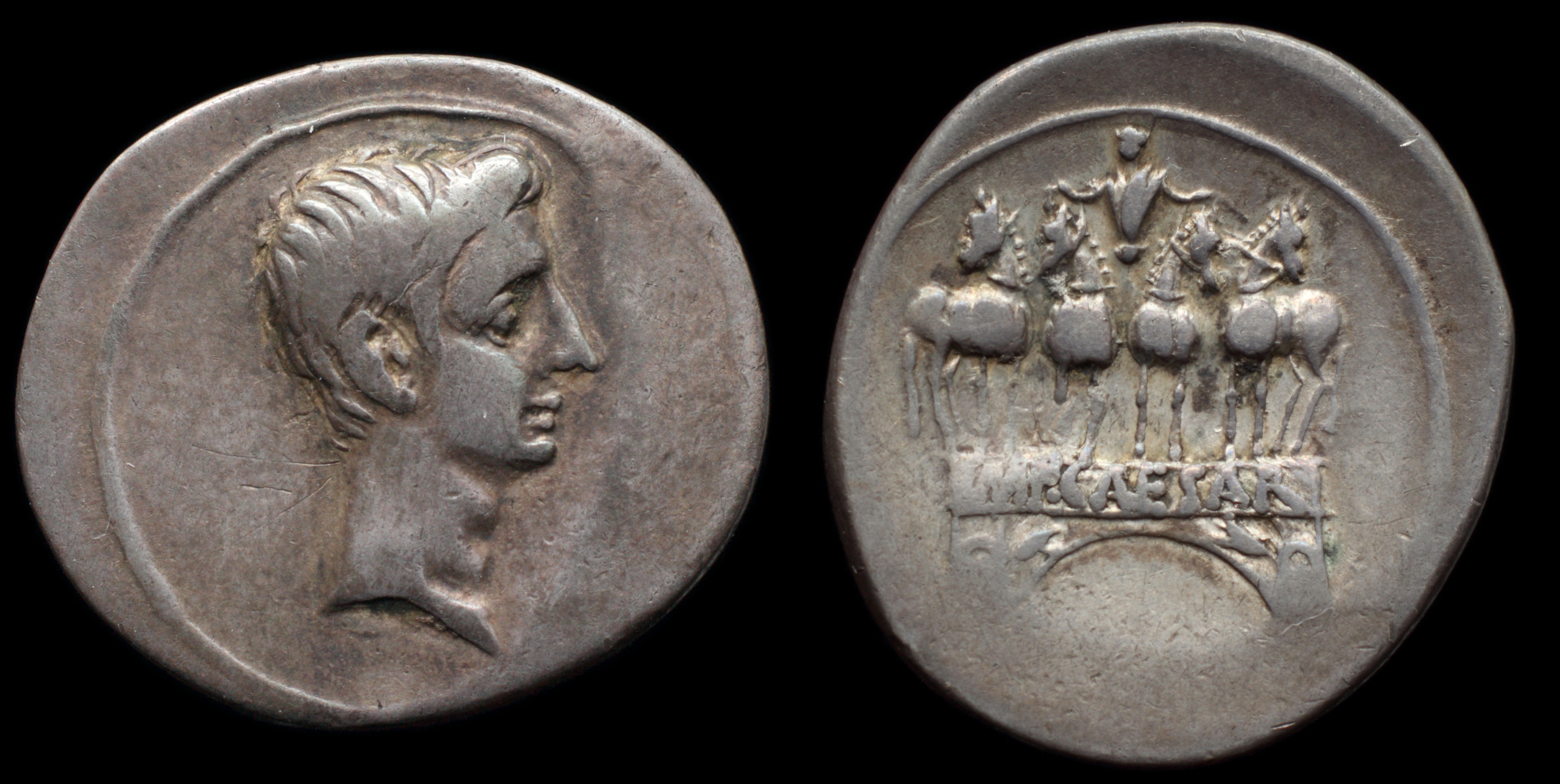
Reverse: Octavian’s Actian arch surmounted by large statue of Octavian in facing triumphal quadriga; IMP·CAESAR
Die Orientation: -
Weight: 3.8 g
